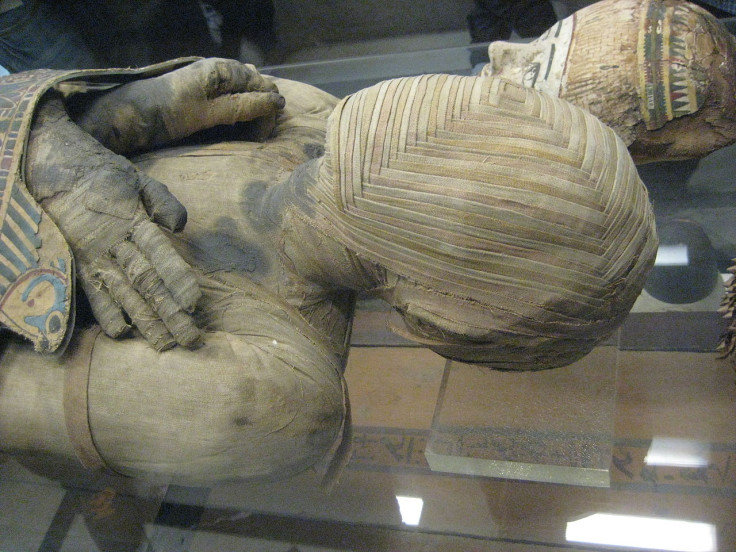Mummification in Ancient Egypt Started 1,500 Years Earlier Than Previously Thought

Researchers from the universities of York, Macquarie and Oxford have discovered the origins of mummification in ancient Egypt actually began 1,500 years earlier than previously thought.
Until now, scientific evidence of the presence of embalming agents has been limited to isolated occurrences during the late Old Kingdom (2,200 BC), with mummification used much more prominently during the Middle Kingdom period from 2000-1600 BC.
Bodies belonging to the Late Neolithic and Predynastic periods between 4,500 and 3,100 BC have traditionally been thought to have desiccated naturally through the action of the hot, dry desert sand, like the Gebelein Man at London's British Museum.
But the team of researchers examined linen mummy wrappings from bodies buried in one of the earliest recorded ancient Egyptian cemeteries at Mostagedda in Upper Egypt and found traces of the resins used to make the complex embalming agents.
"For over a decade, I have been intrigued by early and cryptic reports of the methods of wrapping bodies at the Neolithic cemeteries at Badari and Mostagedda," said Dr Jana Jones of Sydney's Macquarie University.
"In 2002, I examined samples of funerary textiles from these sites that had been sent to various museums in the United Kingdom through the 1930s from Egypt.
"Microscopic analysis with my colleague Mr Ron Oldfield revealed resins were likely to have been used but I wasn't able to confirm my theories, or their full significance, without tapping into my York colleague's unique knowledge of ancient organic compounds."

Jones began studying the Neolithic bodies together with Dr Stephen Buckley, a Research Fellow at the University of York, who used a combination of gas chromatography-mass spectrometry and sequential thermal desorption and pyrolysis to analyse the wrappings found with the bodies.
The researchers were able to identify a pine resin, an aromatic plant extract, a plant gum/sugar, a natural petroleum source and a plant oil/animal fat in the funerary wrappings.
"The antibacterial properties of some of these ingredients and the localised soft-tissue preservation that they would have afforded lead us to conclude that these represent the very beginnings of experimentation that would evolve into the mummification practice of the Pharaonic period," said Dr Buckley.
"Having previously led research on embalming agents employed in mummification during Egypt's Pharaonic period, it was notable that the relative abundances of the constituents are typical of those used in mummification throughout much of ancient Egypt's 3,000-year Pharaonic history.
"Moreover, these resinous recipes applied to the prehistoric linen-wrapped bodies contained antibacterial agents, used in the same proportions employed by the Egyptian embalmers when their skill was at its peak, some 2,500-3,000 years later."
© Copyright IBTimes 2025. All rights reserved.





















